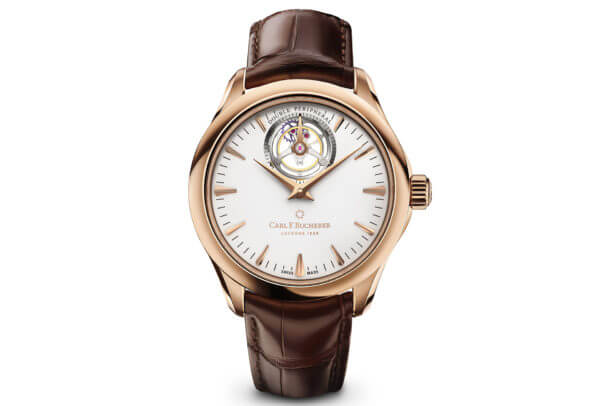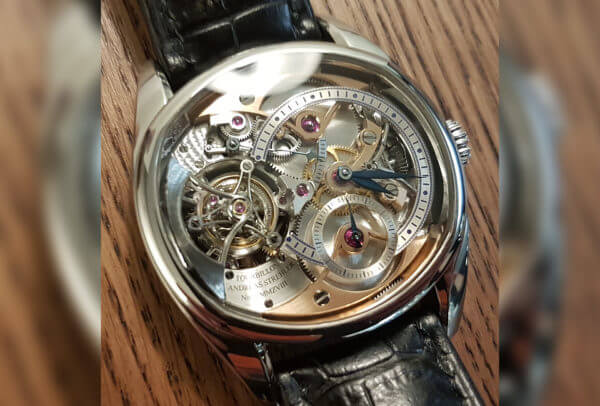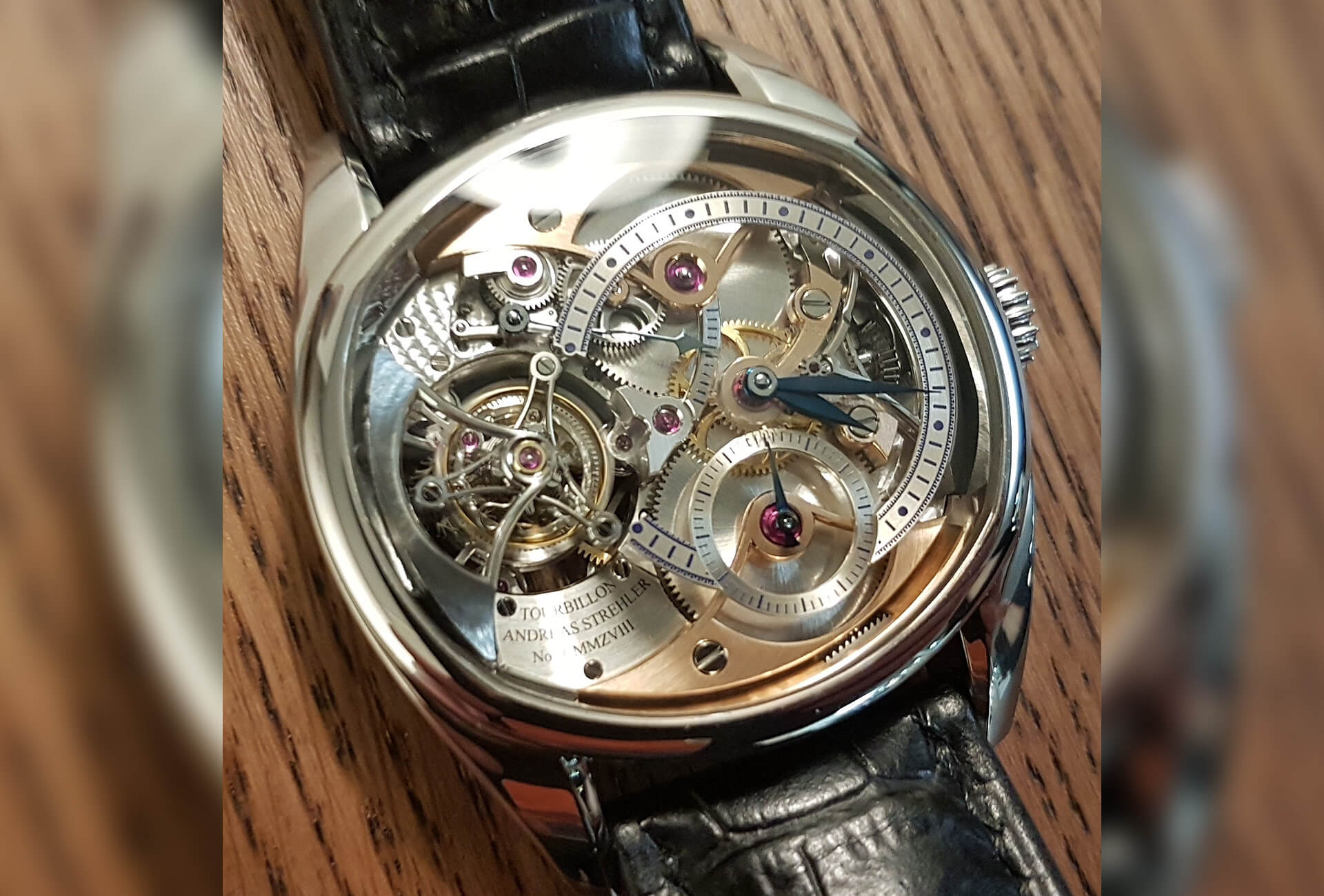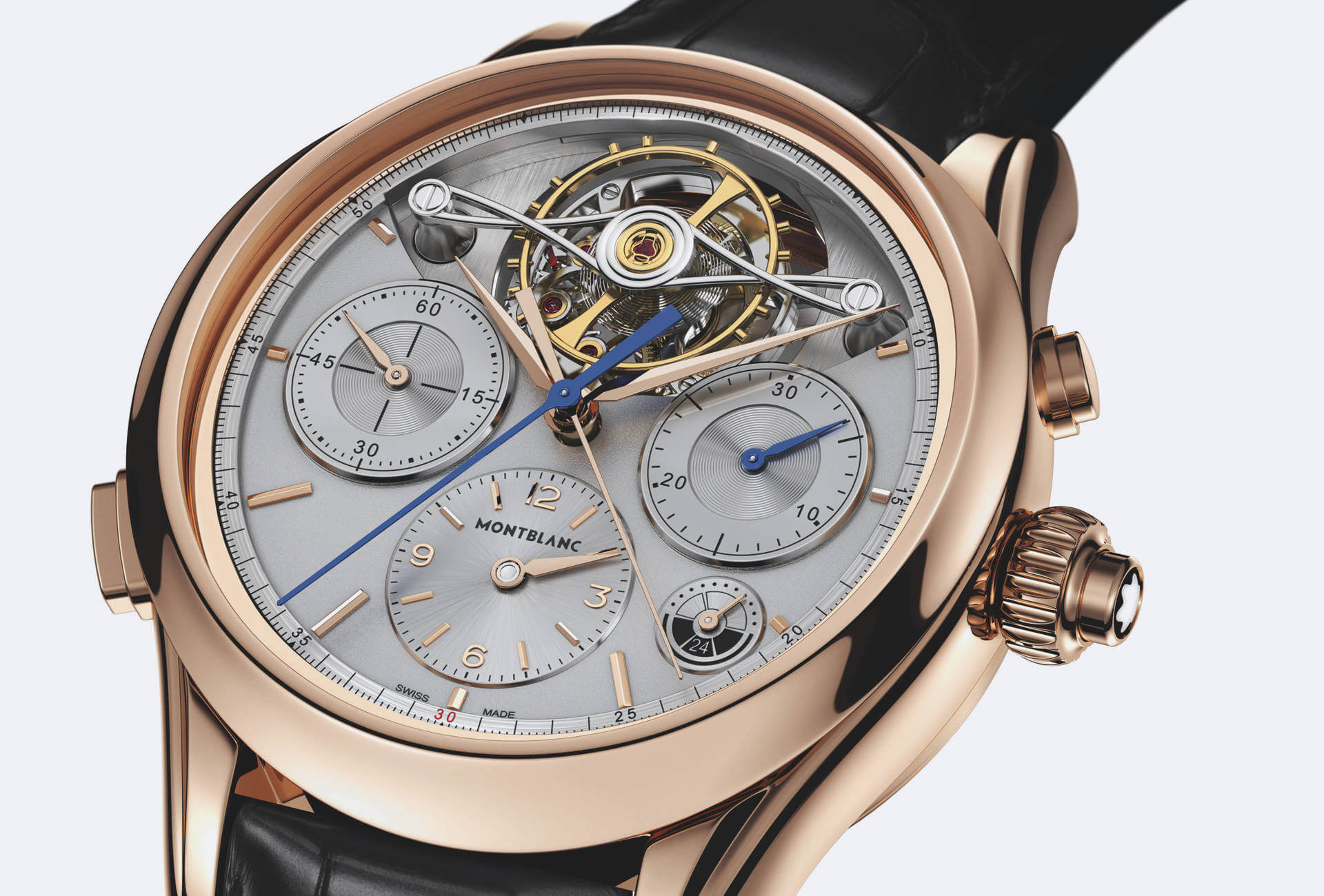Has the tourbillon lost its crown? After dominating retailers’ windows as watch sales went into overdrive between 2005 and 2014, manufacturers began to rein in production of this prestigious mechanism. The reason: a combination of overkill and prohibitive pricing – between CHF 100,000 and CHF 500,000 for one of these mechanical marvels. The divorce between the tourbillon and a wealthy clientele became final when in 2016 TAG Heuer had the audacity to launch its Carrera Manufacture Tourbillon at… CHF 15,000. Granted, we’re talking industrial production using extensively automated processes and without the finishing of a high-end product, but the damage was done. The tourbillon no longer turned heads. Previously considered the pinnacle of the watchmaker’s art, victim of its own success, the once coveted complication fell out of favour. Until now. Three particularly innovative interpretations were on show at this year’s Baselworld, the work of Blancpain, Carl F. Bucherer and Andreas Strehler. The tourbillon could be ready to reclaim its throne.

It took 20 years for Andreas Strehler to imagine his own tourbillon. Not that he didn’t have the means; this independent watchmaker has made more than one for other brands via Uhrteil, the company he owns in Sirnach, in the Swiss canton of Thurgau. “I was waiting for the right idea,” he says with a smile. In 2013, on the heels of François-Paul Journe, the master watchmaker presented his now famous remontoir d’égalité. This constant-force mechanism delivers a regular flow of energy through the fourth wheel so as not to influence the escapement. The Sauterelle Tourbillon now combines this mechanism with a tourbillon by way of a trans-axial construction. “I put the remontoir d’égalité under the tourbillon cage on the same vertical axis,” he explains. “The remontoir spring stores and releases energy every second to drive the tourbillon and maintain its regularity.” In other words, the first ever jumping tourbillon.

All's clear
Blancpain’s tourbillon is a lesson in transparency. Designed for the Villeret double-stepped case that is typical of La Vallée-de-Joux, the new Calibre 260MR of the Villeret Tourbillon Volant Heure Sautante Minute Rétrograde displays digital jumping hours and retrograde minutes – neither of which has appeared in a Blancpain wristwatch before now. Even then, the eye is drawn to the tourbillon inside an opening at 12 o’clock in the Grand Feu enamel dial, although it may take a handful of seconds to realise how special its architecture is. Blancpain has replaced the lower bridge of this flying tourbillon with a sapphire disc to create the illusion that it floats untethered from the rest of the movement. In addition, gears are positioned on the side rather than under the tourbillon. This, and the absence of an upper bridge, makes the whole thing quite magical.
217 years after the invention of the tourbillon and 98 years after the flying tourbillon, Carl F. Bucherer creates the floating tourbillon.
Blancpain’s tourbillon is impressive enough, having made the lower support completely invisible; Carl F. Bucherer leaves us wide-eyed in wonder by removing it altogether! The brand from Lucerne has reprised the principle of its peripheral oscillating weight, a particularly robust and reliable system that debuted in 2008, to suspend the regulator in its Manero Tourbillon DoublePeripheral. There are no bridges, upper or lower, to support the tourbillon. Instead, the peripherally mounted cage is guided by three ceramic ball bearings. Exactly 217 years after Abraham-Louis Breguet invented the tourbillon and 98 years after Alfred Helwig invented the flying tourbillon, Carl F. Bucherer has written its own page in history with the invention of the floating tourbillon.















